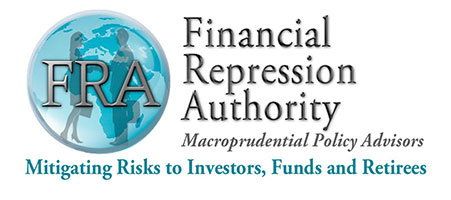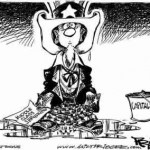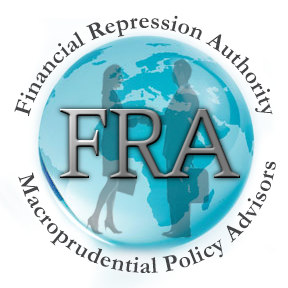
MONEYWEEK.COM article points out the worse things get on the European financial/economic crisis, the more pressure there is on the European Central Bank (ECB) to print money
– stocks will likely go up as this happens on the anticipation that the ECB will given in & start money printing
.. “TheECB would print money and use it to buy eurozone government bonds, in order to prop up the region’s banking sector, and to encourage more risk-taking by lenders and investors. Of course, any hint of more money-printing always cheers the market, and European stocks reacted well to the news.”
.. the article points to how U.S. & UK stocks have similarly reacted positively on all the money printing
.. whether all this money is good for the economy or whether it even benefits the economy in any positive way is another question
.. in terms of investing, the article suggests sticking with countries that are looking to do more money printing & that have relatively inexpensive stock markets, such as Europe or Japan
.. the article emphasizes the approach of financial repression taken by the U.S. & UK in keeping interest rates down & allowing inflation to rise in order to pay off some government debt via inflation, rather than by defaulting or cutting back spending
.. most western world governments are in this bind, so that “we could see interest rates staying lower than markets expect for some time. And in the longer run, we could see a lot more inflation than we’ve been used to as well”




 08/27/2014 - FINANCIAL REPRESSION REQUIRED TO PAY GOVERNMENT DEBTS & UNFUNDED OBLIGATIONS
08/27/2014 - FINANCIAL REPRESSION REQUIRED TO PAY GOVERNMENT DEBTS & UNFUNDED OBLIGATIONS
















 The transfer of power to a single European bank supervisor should be a game changer.
The transfer of power to a single European bank supervisor should be a game changer.
























 .. “When money serves as a stable measure of value, it most clearly expresses the value of everything in terms of everything else.”
.. “When money serves as a stable measure of value, it most clearly expresses the value of everything in terms of everything else.” CATO Institute Senior Fellow James Dorn explains how & why China has been picking up the pace of its purchases of U.S.Treasury Bonds recently, but “both it & the U.S. would be better off if China relied less on the accompanying investment & export-led model”
CATO Institute Senior Fellow James Dorn explains how & why China has been picking up the pace of its purchases of U.S.Treasury Bonds recently, but “both it & the U.S. would be better off if China relied less on the accompanying investment & export-led model”

